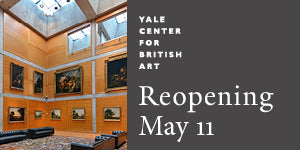A native of Jackson, Mississippi, Felandus Thames is losing his drawl. It’s been 10 years since he left his home state, but the memories of racial persecutions—of unjustified accusations and imprisonments targeting his black family members and neighbors—has stuck with him. And while Thames is now well-rooted in the northeast—a graduate of the Yale School of Art, class of 2010, he’s mostly circulated between New Haven, New York and his current base in Norwalk—he, and increasingly the rest of us, continues to see blacks disproportionately searched, arrested and convicted both north and south of the Mason-Dixon.
In his solo exhibit Whereabouts Unknown, which filled University of New Haven’s Seton Gallery in February, Thames entered the massive and difficult subject of mass incarceration through a mix of poetry and repurposed objects. He put three excerpts of Etheridge Knight’s poem, The Idea of Ancestry, which Knight wrote from prison in the 1960s, onto separate walls of the gallery. There was also a “loku”—a humorous variation on a haiku—by Amiri Baraka. The excerpts appeared on the walls of the gallery, written neither in paint nor prison-style scratches but rather in hair brushes, one per letter, some of their bristles pulled out to create negative space and produce each fibrous character.
sponsored by
Knight’s poem, slightly truncated in spots, began on the nearest wall:
“Taped to the wall of my cell are 47 pictures: 47 black faces: my father, mother, grandmothers, grandfathers, brothers, sisters…”
Another excerpt continued the thought:
“… uncles, aunts, nieces, nephews. They stare across the space at me sprawling on my bunk. I know their dark eyes.”
Mirroring the blueprint of Knight’s cell as described in his poem, on another wall was an installation made of vintage Mason jars and photos. The photos were of imagined uncles and aunts and nieces and nephews, the kind of photos of that could have been found in Knight’s cell, but with an artistic twist: all of them are sunk in white hair relaxer, the kind many blacks feel pressured to use to remove the natural kinks from their hair, that fills the bottom third of each jar.
The relaxer will eventually decompose the photos, Thames says. This self-destructing art serves in part as a comment on the corrosive effects of forsaking the natural black appearance for the sake of white beauty standards. Already the photos’ colors are beginning to fade, their paper curling inward and sinking into the white, tarry ooze.
sponsored by
Thames’s own short afro suggests he has no aspirations towards the aesthetic he criticizes, though he seems to have adopted that of the prototypical artist fairly well. At the gallery he wore an equilateral soul patch, mock turtleneck sweater and yellow, vintage tortoise glasses.
Thames approaches his work with perspective on the wider theoretical undercurrents of the art world. He often invades genres where black artists have traditionally been underrepresented, such as pop art and abstract expressionism, and sometimes that means bringing items common in black culture—thickly bristled brushes and hair relaxer being just two—into the work.
His large graphite works Spook Drawing #10 and Spook Drawing #11 are filled with abstract figures seemingly part-jellyfish, part-phantom. Upon closer inspection, the mysterious shapes are stencils of various crumpled and folded do-rags—hair-wear that has its origins in slave culture and is commonly found in contemporary prisons. Another set of items—zip ties—was used to wall and roof a wood-framed jailhouse that stood in one corner of the exhibit. The plastic rings are all too familiar in the lives of blacks in New York—Thames’s personal connection to New York comes from having practiced there for a time—where zip-ties have often been used during “stop and frisk” police actions, which disproportionately target blacks and Latinos.
When it comes to whether his—or any—art helps solve the kinds of social problems his work addresses, Thames is skeptical. It’s “the crux of a really big problem for me,” he says. Drawing on his theoretical learning, Thames believes that “once [art is] consumed, it’s commoditized.” If it becomes popular with the masses, it loses its original impact. He points to Jean-Michel Basquiat’s work as one example of a body of art he feels has been cheapened by fame. But while commercial popularity is problematic, Thames also thinks that cloistered recognition—inclusion in most museums, for example—isn’t so helpful either. “If it goes in a museum, African Americans won’t see it,” he says, referring to statistics that indicate blacks don’t go to museums nearly as often as whites.
Notwithstanding the seriousness of his art or the doubts he has regarding its impact, Thames still has a sense of humor. In one piece, he spoofs the iconic pop art statue LOVE—the one with the tilted O—by Robert Indiana. Thames’s take, which he’s produced in various formats including a neon wall installation, reads “THUG,” with a tilted U.
Another wry pinging lies in the soundtrack Thames made for the Seton Gallery exhibit. Mixed by Thames himself, the track includes a clip from Rahsaan Roland Kirk’s “Blacknuss,” a song played only on black keys in which he can be heard saying, “We don’t mean to eliminate nothin’ but we gonna just hear the black notes at this time if you don’t mind.”
Like Kirk, Thames is focusing his art on the black keys, though he isn’t committed to any particular movement of artistic notes, or for that matter, political songs. Instead, Thames’s work blends the artistic and political impulses of the civil rights era and melds them with those now reawakening in our midst.
Felandus Thames
(601) 953-0483 | felandus.thames@gmail.com
www.felandusthames.com
Written and photographed by Daniel Shkolnik.










